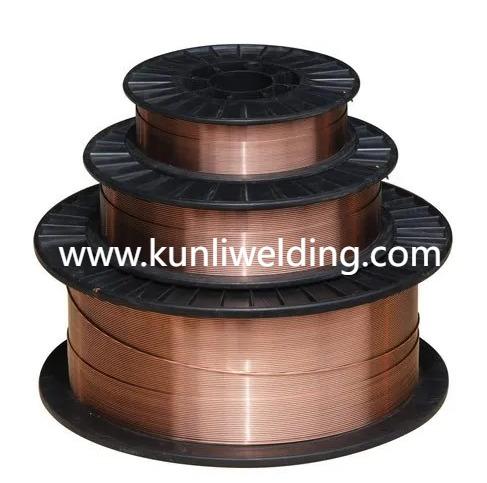In modern production environments where uptime matters and finish quality is visible to customers, the physical reel that holds welding wire can influence outcomes as much as the wire alloy itself. For procurement teams and shop managers choosing Aluminum Mig Wire Manufacturers it is worth remembering that spool quality affects feed behavior, qualification time and the chance of interruption on automated lines.
A well wound reel makes feeding predictable. When wire is evenly layered and free from loose loops it runs smoothly through feeders and liners. Poor winding can introduce snags that lead to bird nesting at the gun or to sudden feed stops that halt an entire cell. For automated operations where multiple shifts run the same program, those interruptions add up to labor on corrective work and lost output. Shops that require sample reels and visual checks on winding often reduce those problems before a reel ever reaches a feeder.
Packaging protects the product in transit and on the shelf. Spools that arrive with inner seals and protective covers resist contamination that would otherwise raise the risk of porosity in welds. Dust oil and moisture on the wire surface translate into arc instability and unwanted finishing work later. When supply chains are under pressure and lead times shift, incoming quality matters more because teams have less room to rework material and to absorb delays.
Spool material and flange design influence how a reel behaves in an automatic feed setup. A rigid flange that keeps the spool shape stable prevents ovaling that can pinch wire and cause feed resistance. Likewise a secure bore fit reduces wobble which otherwise shows up as uneven pay out during long seams. Small mechanical details on the reel add up in continuous runs where steady feed speed and consistent arc start behavior are essential for a smooth process.
Traceability and labeling on the spool are practical procurement tools. Clear lot marking and simple handling notes help trace any variation back to a particular batch so shops can isolate problems quickly. When quality drift occurs the ability to remove suspect reels from use and to work with the supplier on a targeted investigation shortens the time to a corrective action and protects overall production health.
Inspection routines at receipt protect the line. A short checklist that verifies spool winding visual surface condition and packaging integrity takes only a few minutes but prevents many common faults. Feeding a short test length through the shop feeder before committing a full reel confirms that the spool will behave under the exact conditions of the plant. These small tests are economical insurance against more costly stoppages.
Supplier practices matter when it comes to spool reliability. Manufacturers that control winding tension and that provide consistent packaging reduce the variables a shop must manage. When a supplier offers sample reels for shop trials and publishes recommendations for feed path and liner type it shortens the qualification cycle and reduces the effort needed to prove a product on the floor. That proactive support is especially valuable in times when supply patterns are shifting and teams need to move quickly from trial to regular runs.
Maintenance of feeding equipment complements spool quality. Even a well wound reel will perform poorly if the feeder drive rolls are worn or the liner has buildup. Regular inspection and routine replacement of wear parts help preserve the benefit of good spooling. Operators who follow a brief shift check list for feeders, liners and contact tips typically see fewer feed faults and a steadier production rhythm.
Storage and handling practices protect the reel before it is used. Keep spools in a dry clean area and avoid handling that allows the wire to unspool or to pick up contaminants. Simple habits such as leaving a short tail on the spool for a quick feed test and rotating stock so older lots are used first reduce the chance of surprises and make spool performance more predictable across runs.
When evaluating suppliers include spool checks in procurement criteria. Ask for sample reels, check winding uniformity and review packaging methods. Request handling and storage recommendations from the vendor so plant teams can follow consistent practices from receipt to feed. Comparing effective cost per acceptable weld rather than only unit price helps teams include the cost of interruptions, rework and qualification into sourcing decisions.
Spool quality is a practical lever that influences how a wire performs in real production. By combining careful supplier selection with simple shop routines for inspection, feeding equipment maintenance and storage, fabricators preserve feed stability and reduce time spent on corrective tasks. For a look at aluminum wire listings and packaging options that pair material with practical spool practices consult the alloy product page at https://www.kunliwelding.com/product/aluminum-alloy-wire/aluminum-alloy-welding-wire.html .



